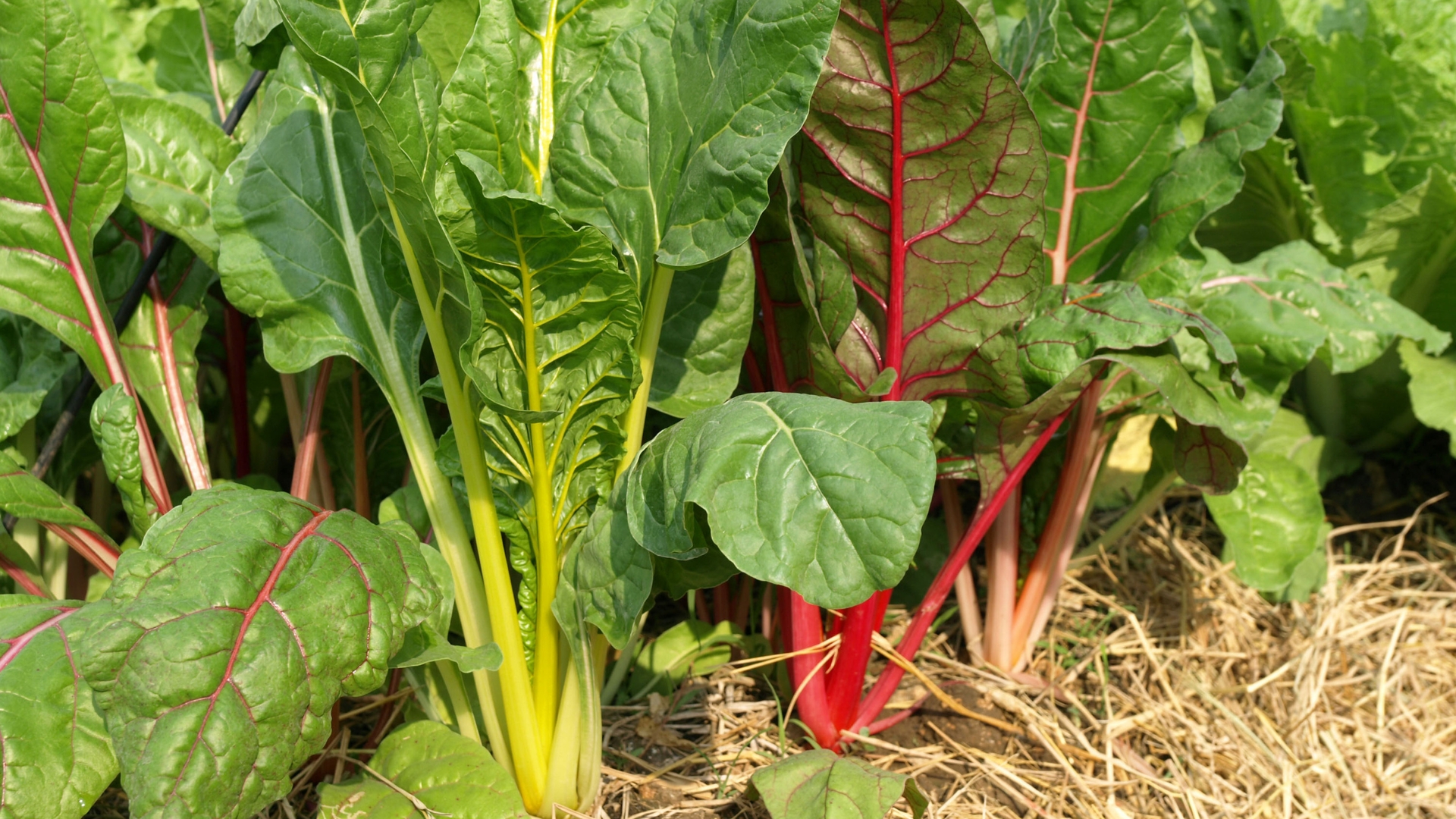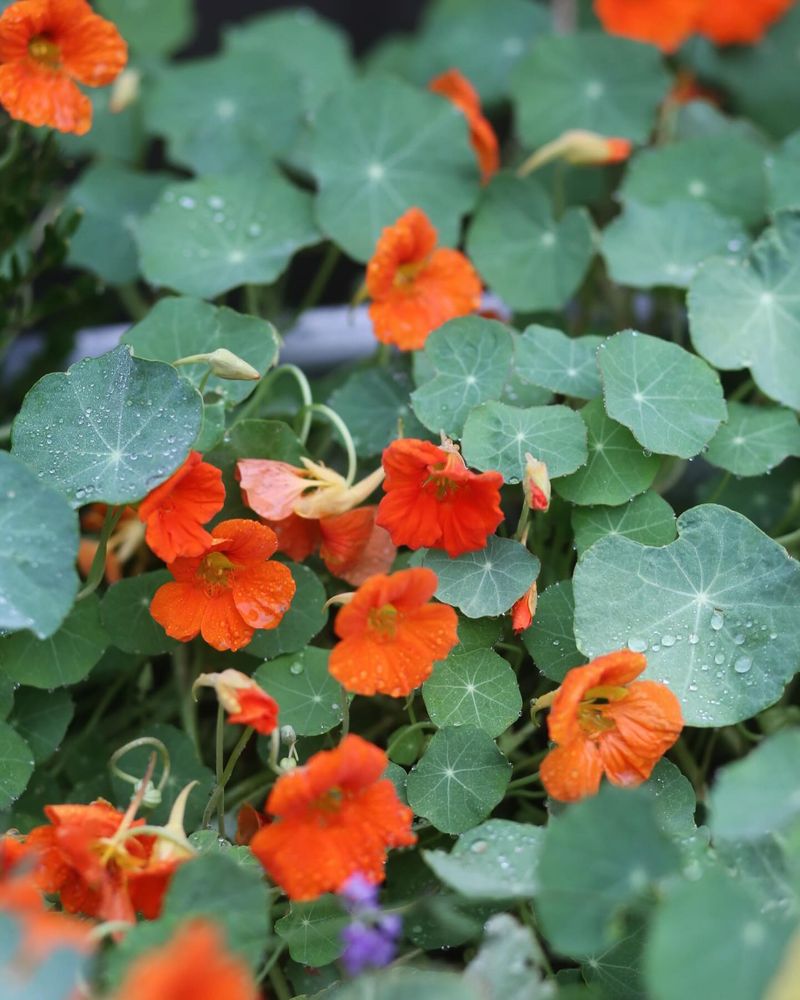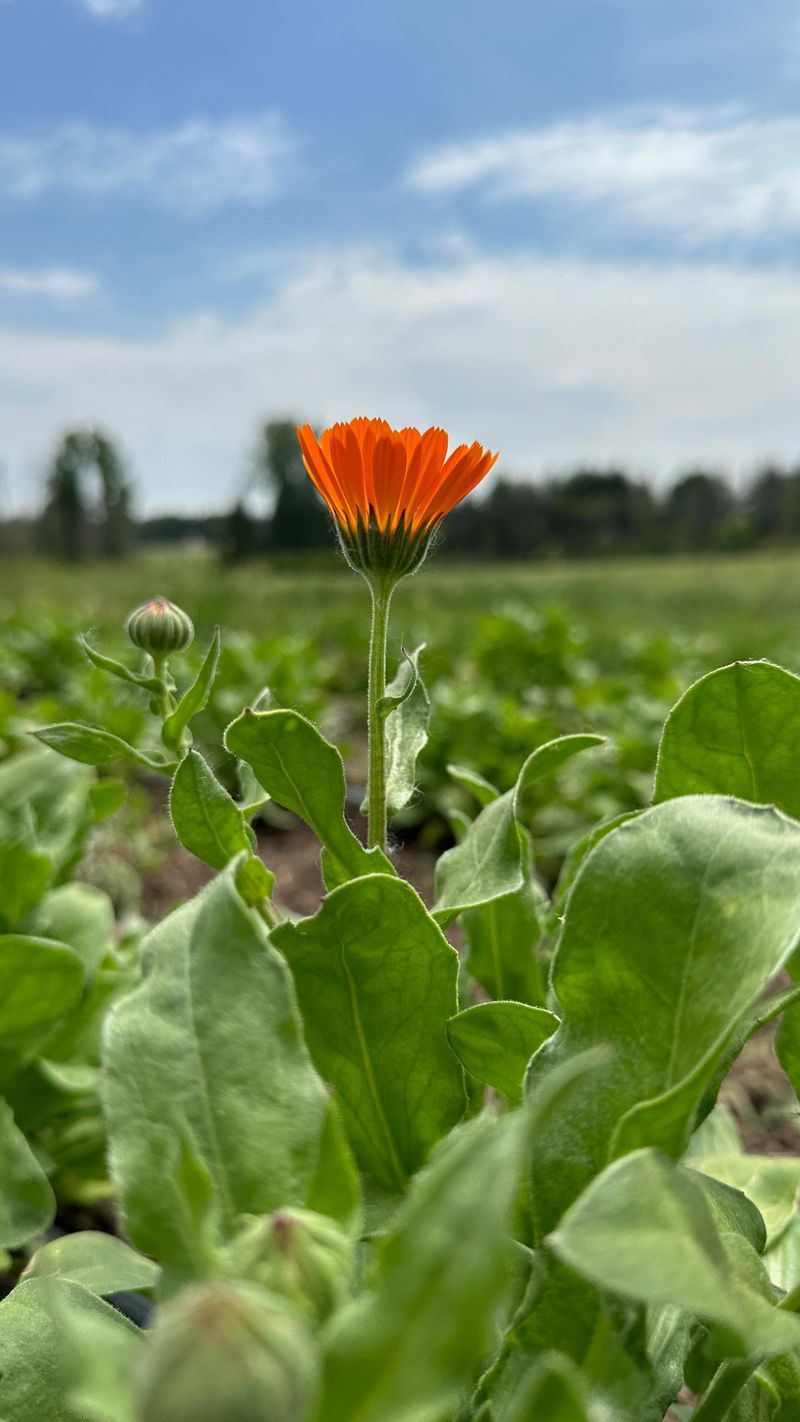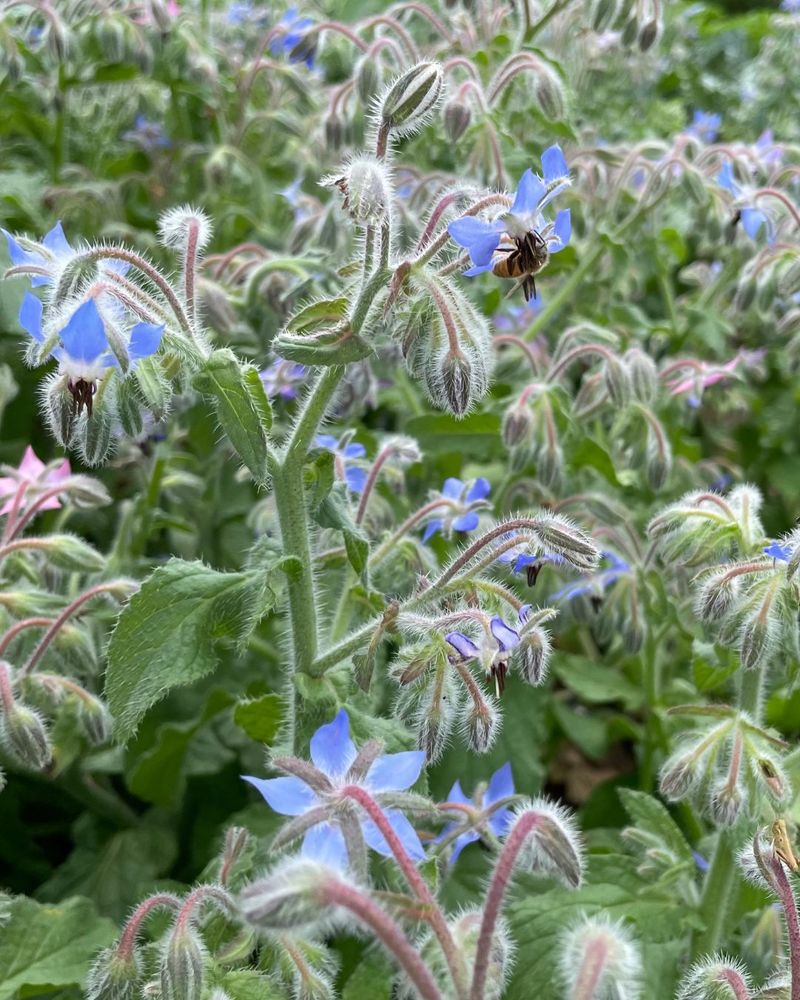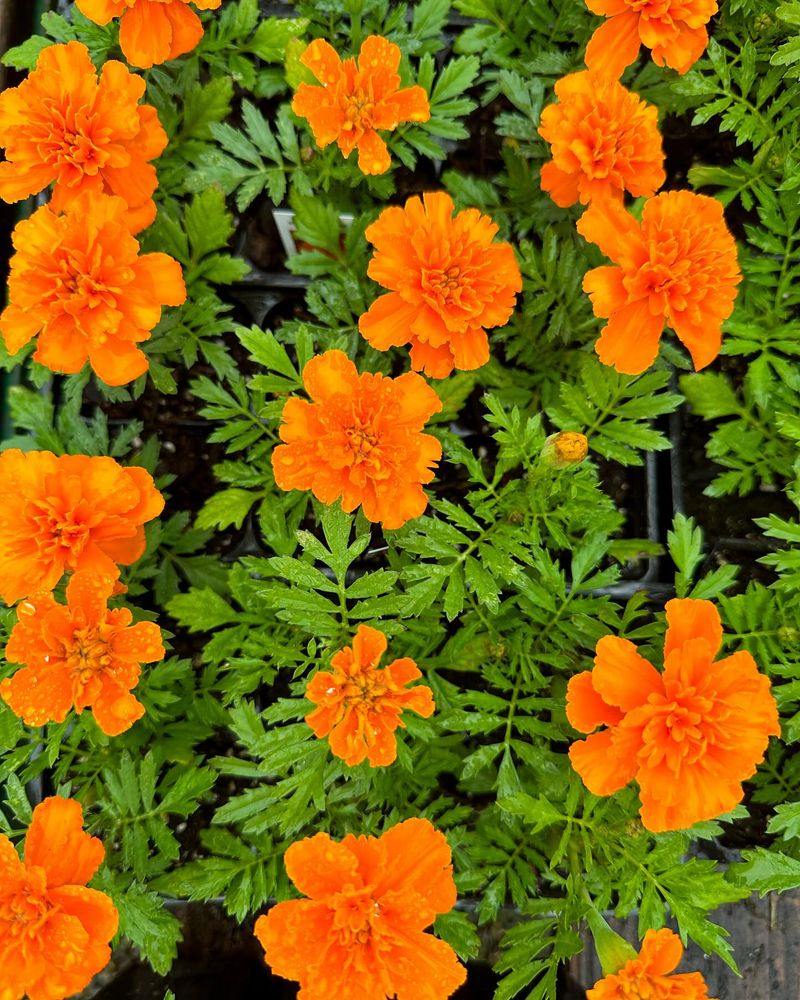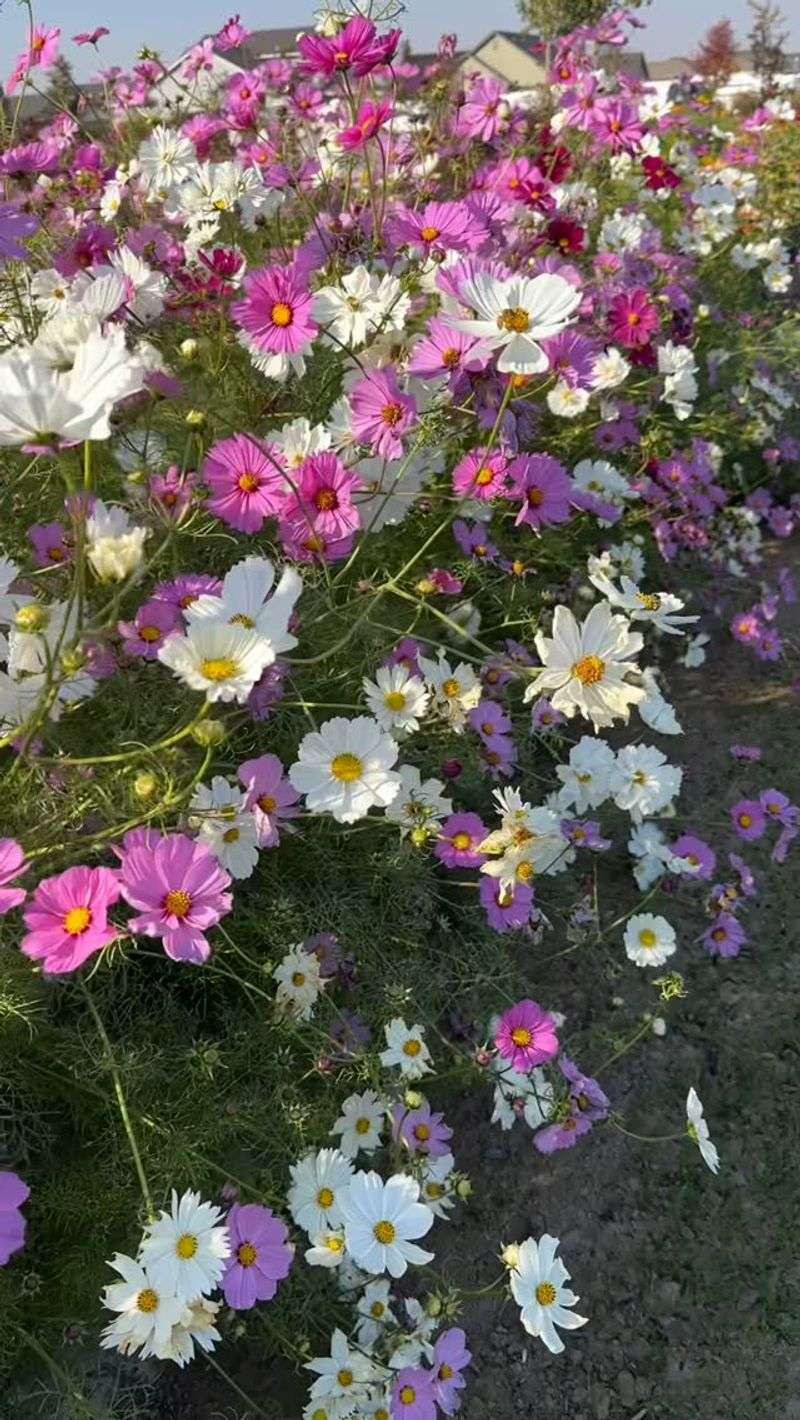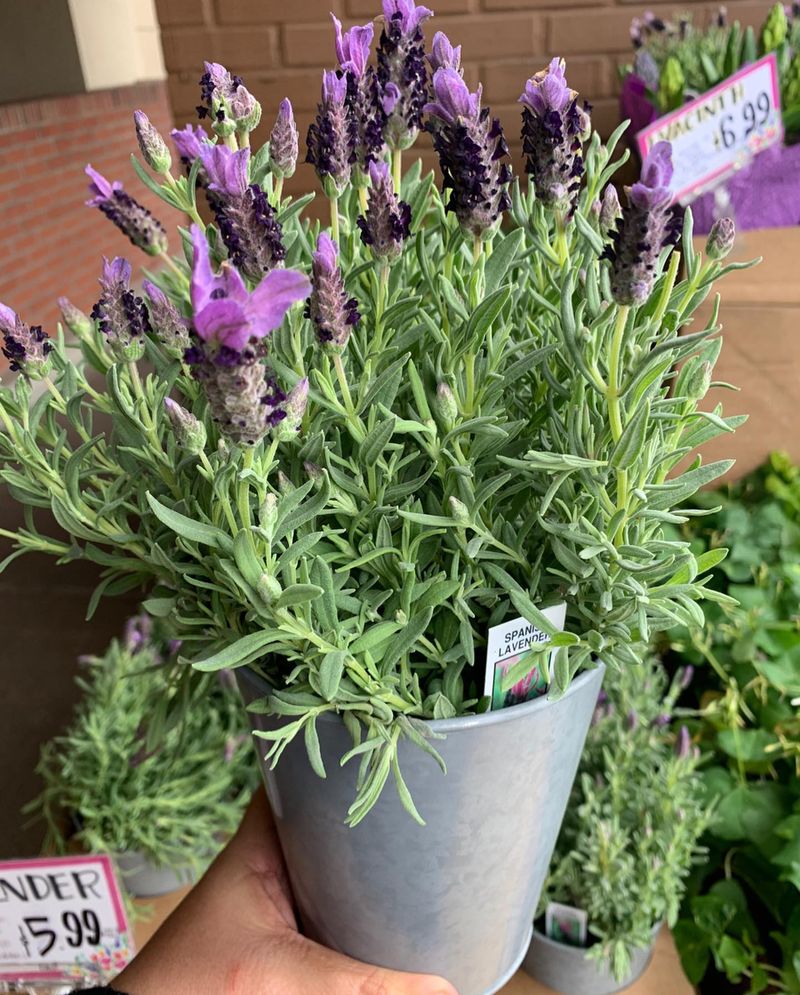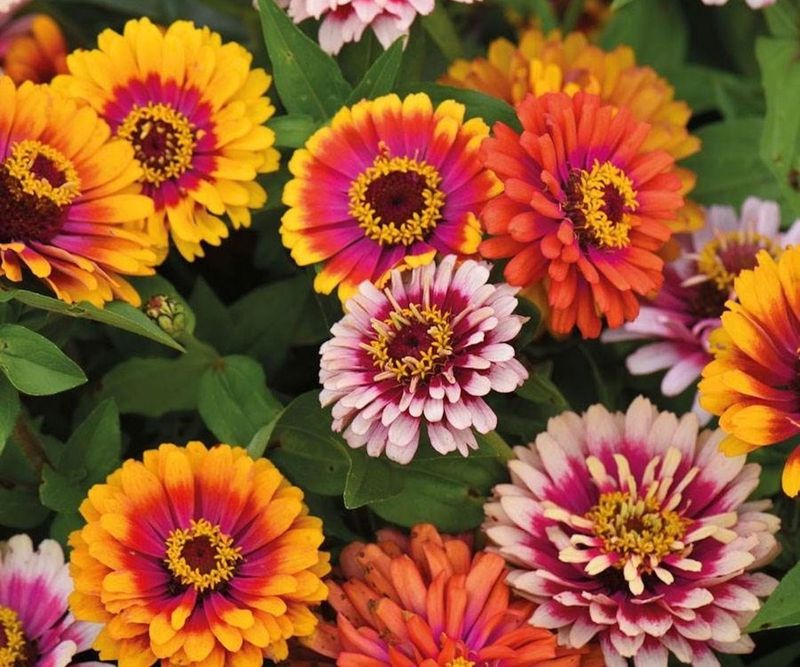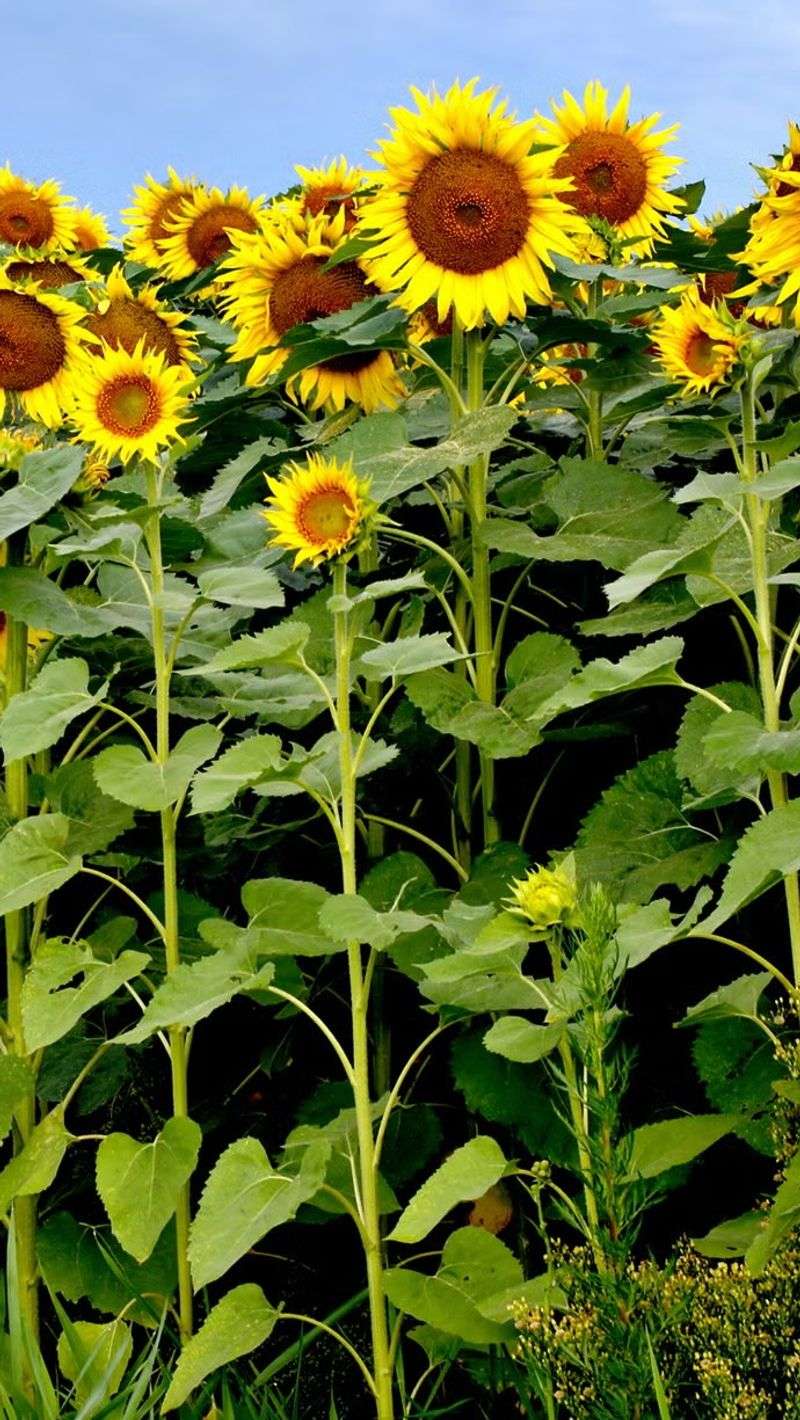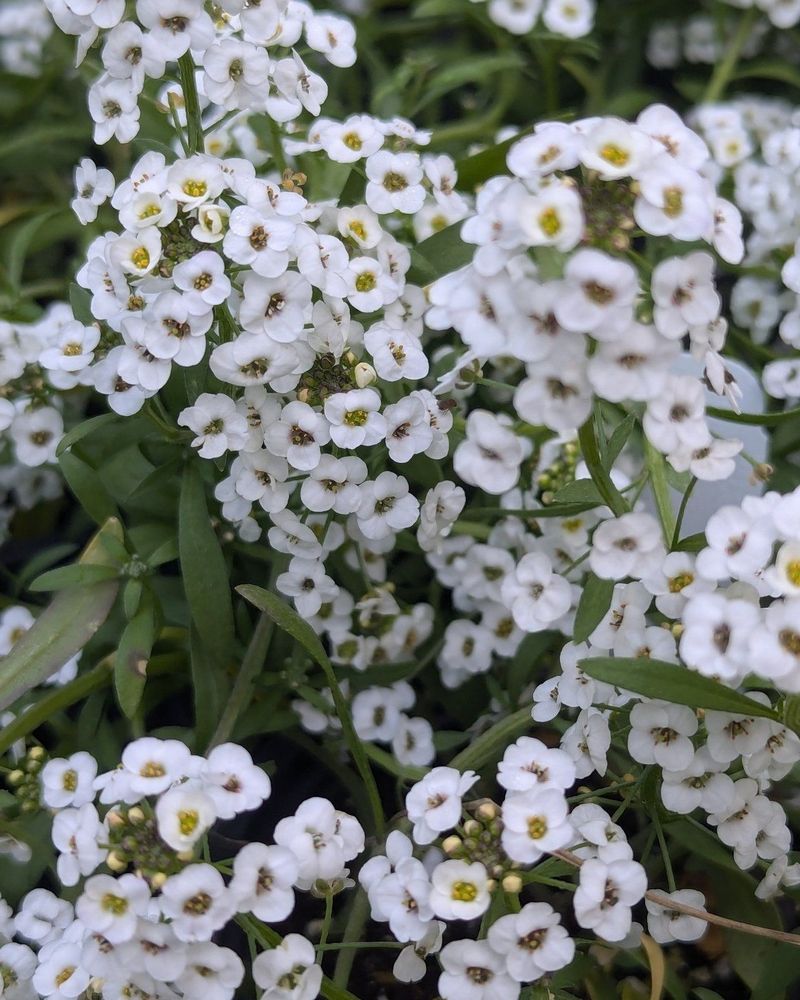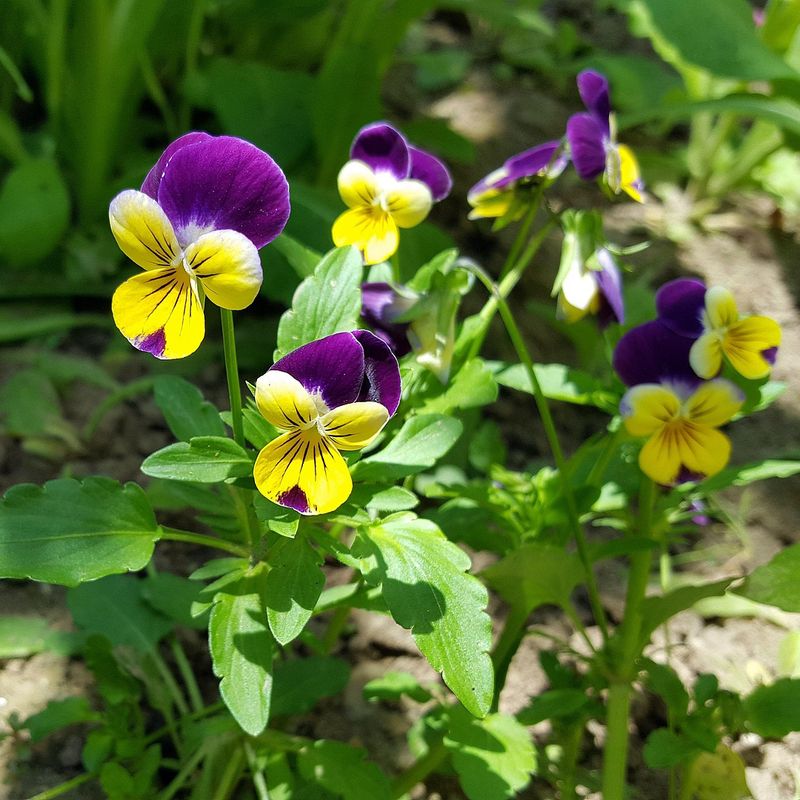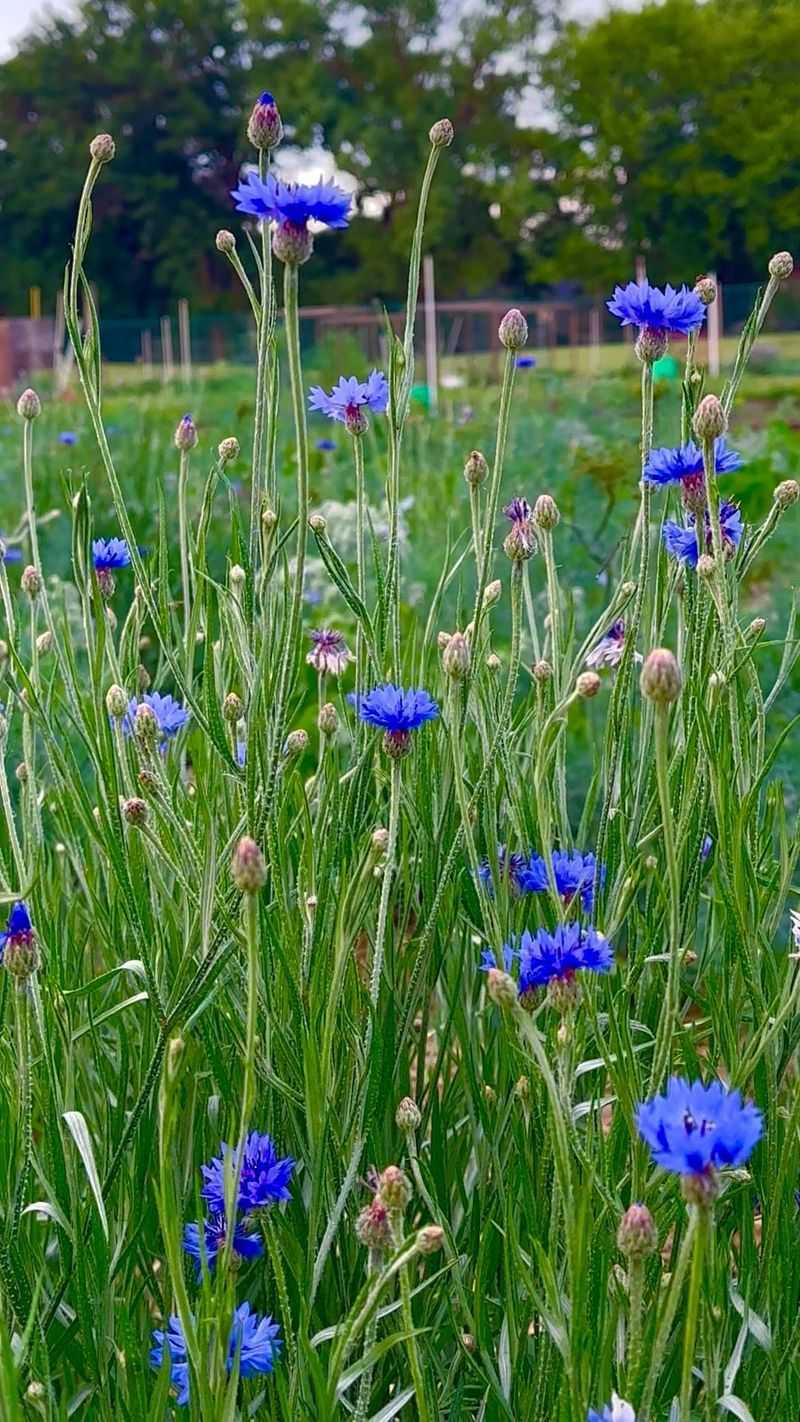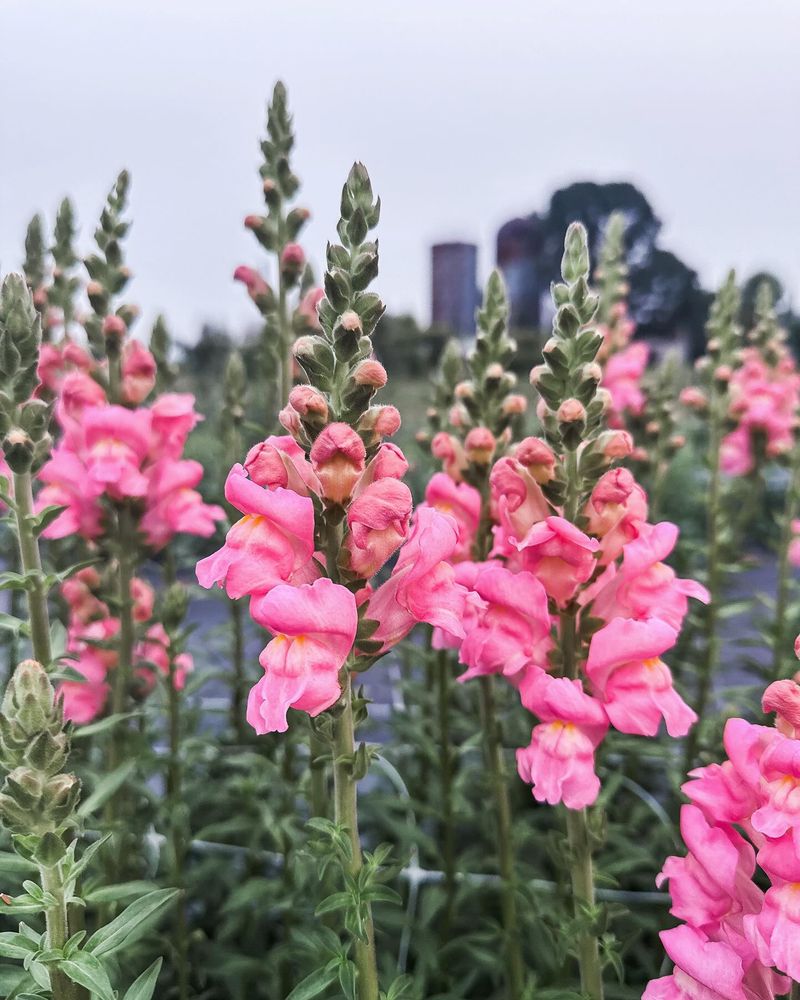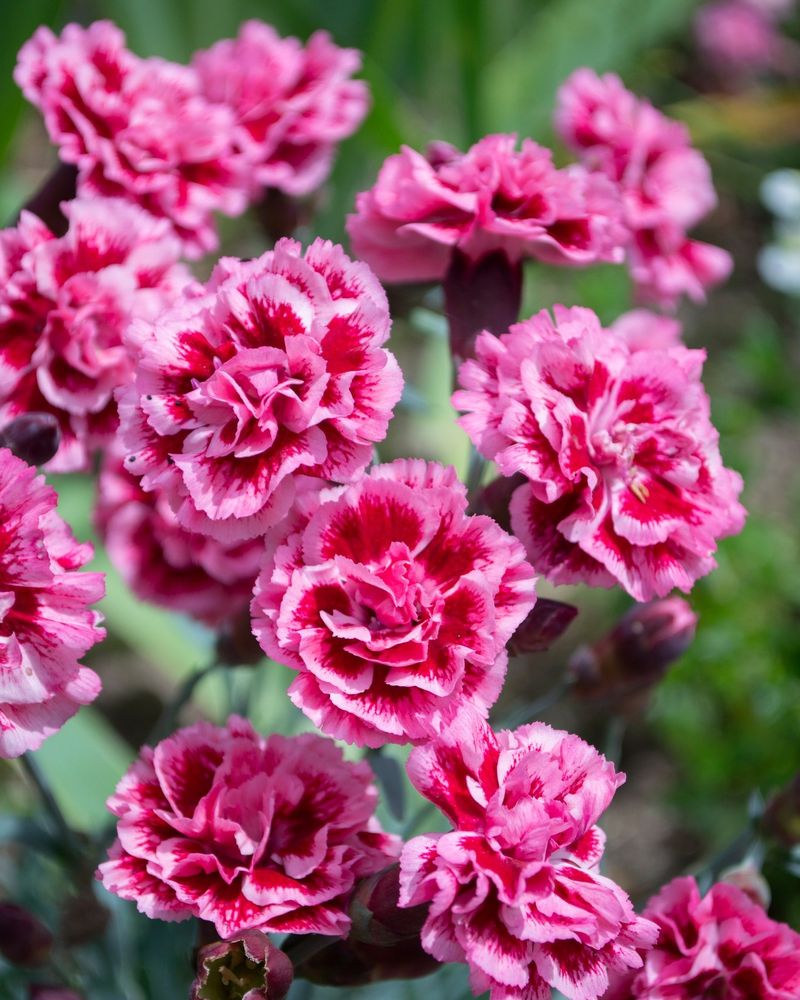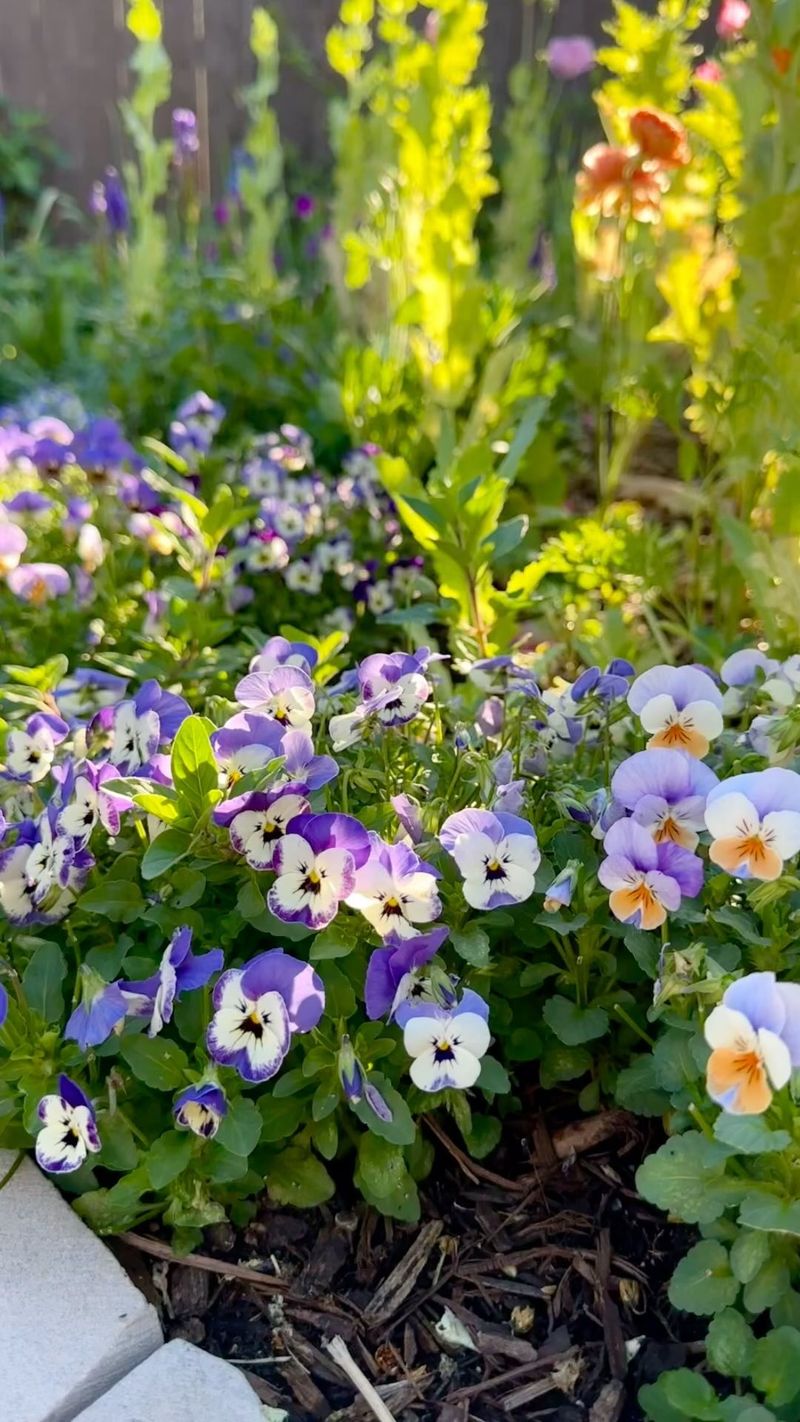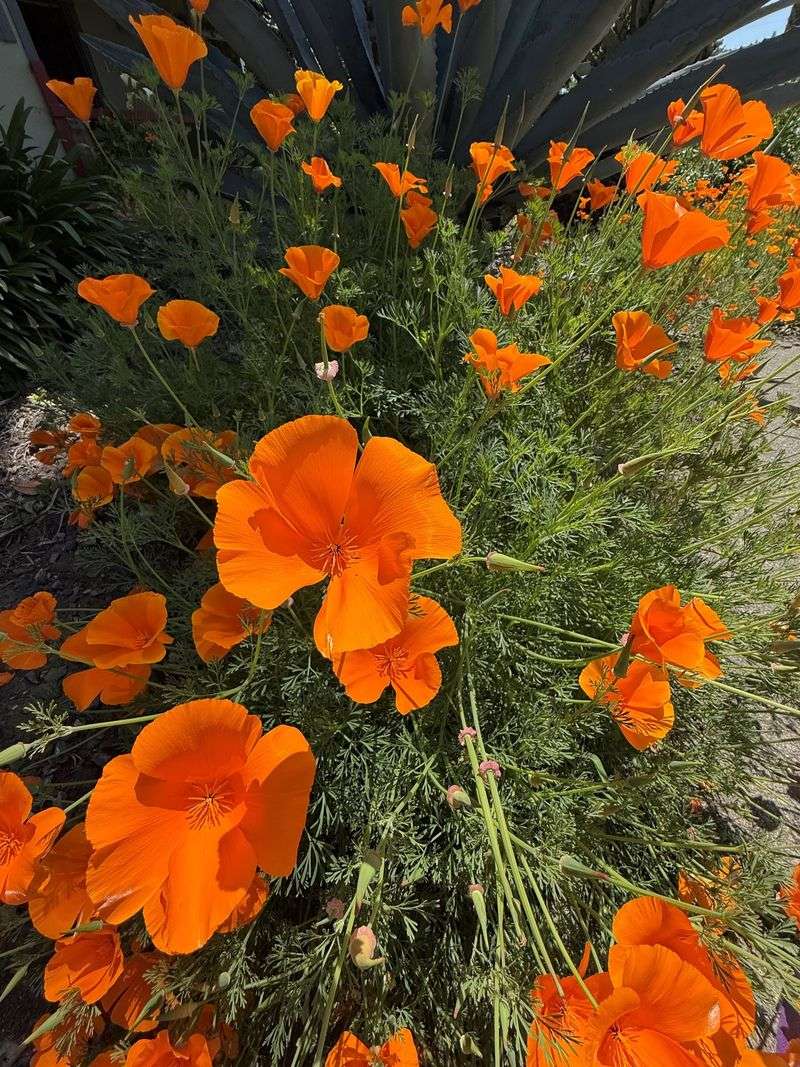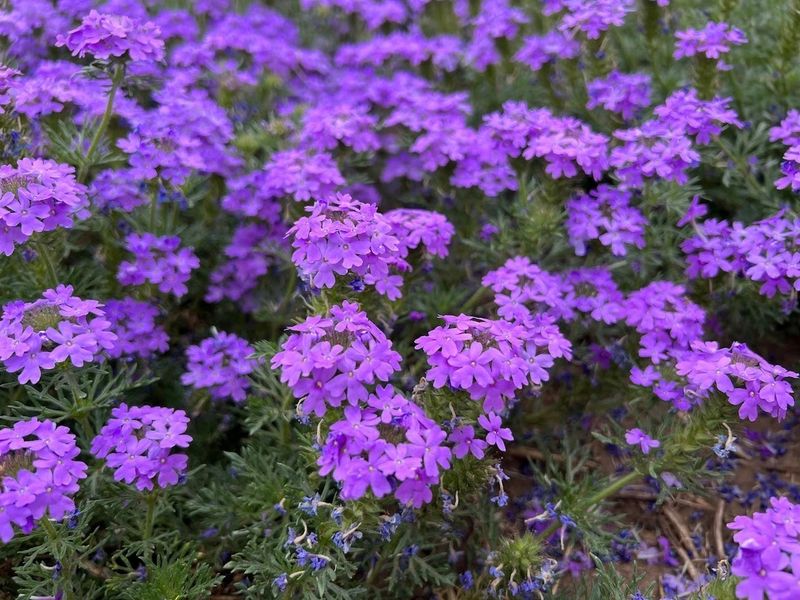Swiss chard is already a standout in any garden, but pairing it with the right flowers takes your garden’s look to the next level. I’ve found that certain blooms can make the vibrant leaves pop even more, creating a beautiful, lively mix.
These eye-catching flowers don’t just add color—they bring a fresh, dynamic vibe that keeps the garden exciting all season long. Mixing veggies and flowers is one of my favorite ways to make a garden feel alive and full of personality.
Check out these 16 stunning flowers that perfectly complement Swiss chard for maximum impact.
1. Nasturtiums
Bright orange, yellow, and red blooms create a striking contrast against dark green chard leaves. These edible flowers taste peppery and can be tossed into the same salads as your harvested chard.
Nasturtiums naturally repel aphids and whiteflies that might otherwise damage your Swiss chard. They thrive in poor soil conditions, making them perfect for garden edges where other plants struggle.
2. Calendula
Golden petals shine like tiny suns between rows of Swiss chard, creating a cheerful garden space. Also called pot marigold, calendula boasts antimicrobial properties that help keep soil diseases at bay.
The resinous stems deter nematodes and asparagus beetles that might otherwise plague your garden. Harvest the petals to brighten up salads or dry them for homemade skincare preparations while your chard continues to flourish.
3. Borage
Star-shaped blue flowers hover above fuzzy foliage, creating a magical contrast with the smooth leaves of Swiss chard. Honeybees absolutely adore borage, ensuring your garden gets plenty of beneficial pollinator visits.
The cucumber-flavored flowers make beautiful garnishes for summer drinks. Borage’s deep taproot helps break up compacted soil and brings up nutrients that benefit neighboring chard plants.
4. Marigolds
Ruffled pompoms in gold, orange, and bronze create bold pops of color among the leafy chard plants. French marigolds release a substance that suppresses nematodes in the soil, protecting your chard’s roots.
The strong scent confuses many pest insects, keeping them away from your precious greens. Plant marigolds as a protective border around your Swiss chard bed for both beauty and natural pest management.
5. Cosmos
Delicate daisy-like blooms dance on tall stems above the chard, adding vertical interest to your garden bed. The feathery foliage creates a beautiful textural contrast with the broader leaves of Swiss chard.
Cosmos attracts beneficial insects like lacewings and parasitic wasps that prey on chard-eating pests. These low-maintenance flowers self-seed readily, returning year after year to protect and beautify your vegetable garden.
6. Lavender
Purple spikes create a stunning backdrop for Swiss chard’s colorful stems, especially the varieties with bright pink or yellow ribs. The strong fragrance masks the scent of your vegetables, confusing pests that might otherwise find your chard.
Bees and butterflies flock to lavender blooms, increasing pollination throughout your garden. The woody perennial nature of lavender means it provides year-round structure while your chard grows seasonally.
7. Zinnias
Bold, dahlia-like blooms in every color of the rainbow create a festive atmosphere around your practical chard patch. Butterflies can’t resist these nectar-rich flowers, bringing movement and life to your vegetable garden.
Cut zinnias regularly for bouquets to encourage more blooms and maintain airflow around your chard. Their strong stems make them perfect for creating a living fence that adds height and structure while protecting more delicate chard leaves.
8. Sunflowers
Towering yellow blooms create dramatic height behind Swiss chard, turning a humble vegetable patch into a garden focal point. Their strong stalks can provide afternoon shade for chard during the hottest summer days.
Birds love sunflower seeds, bringing natural pest control to your garden as they hunt for insects. Choose branching varieties that produce multiple smaller heads for continuous blooms that won’t overwhelm your chard with too much shade.
9. Sweet Alyssum
Tiny white, purple, or pink flowers create a fragrant carpet beneath taller Swiss chard plants. The honey-scented blooms attract hoverflies whose larvae devour aphids that might attack your chard.
Low-growing alyssum acts as living mulch, keeping soil cool and moist around chard roots. This ground cover suppresses weeds while allowing enough space for chard to thrive, creating a beautiful and practical garden partnership.
10. Pansies
Cheerful faces in purple, yellow, and white smile up from between chard plants during cooler seasons. These cold-tolerant flowers extend the beauty of your garden into spring and fall when many other blooms have faded.
Edible pansy flowers can be crystallized with sugar or frozen in ice cubes alongside chard stems for colorful drinks. Their shallow roots don’t compete with chard, making them perfect for filling in gaps between young plants.
11. Bachelor’s Buttons
Electric blue flowers pop dramatically against the green and red tones of Swiss chard. Also called cornflowers, these drought-tolerant plants won’t compete with your chard for water during dry spells.
The unusual color attracts bees from far and wide, improving pollination throughout your garden. Bachelor’s buttons reseed readily, creating a sustainable display that returns year after year alongside your chard plantings.
12. Snapdragons
Spikes of dragon-mouth blooms add vertical interest and bright colors alongside the more horizontal growth of Swiss chard. Cool-season snapdragons thrive during the same times as chard, making them natural garden companions.
Children love to pinch the flowers to make the “dragons” open their mouths, bringing playfulness to your vegetable garden. The tall varieties create beautiful backdrops for chard while shorter types can border pathways through your garden beds.
13. Dianthus
Spicy-scented blooms with fringed petals create a cottage garden feel around your practical chard plants. Their low, mounding growth habit fills spaces between chard without overwhelming it.
Many dianthus varieties are perennial, providing structure and color year after year while annual chard comes and goes. The clove-like fragrance helps mask the scent of vegetables, confusing pests that might otherwise target your chard crop.
14. Violas
Dainty blooms in purple, yellow, and cream create a delicate contrast to the robust leaves of Swiss chard. These cool-weather flowers thrive alongside spring and fall chard plantings when temperatures are mild.
The edible flowers have a mild, sweet flavor that pairs beautifully with young chard leaves in salads. Violas self-seed readily, creating carpets of color that return each season to accompany your chard.
15. California Poppies
Silky orange and gold cups open in the sunshine, creating a dramatic contrast with the deep greens of Swiss chard. Their ferny foliage adds textural interest without competing for space with your vegetable plants.
These drought-tolerant natives attract beneficial insects while requiring minimal water. California poppies self-seed enthusiastically, returning year after year to brighten your chard patch with minimal effort on your part.
16. Verbena
Clusters of tiny flowers in purple, pink, or white create flat landing pads for butterflies visiting your chard patch. The long bloom period ensures your garden stays colorful throughout the growing season.
Heat-tolerant verbena thrives during summer when chard might struggle, maintaining garden beauty even in challenging conditions. The sprawling growth habit makes verbena perfect for softening the edges of raised beds where Swiss chard grows.

